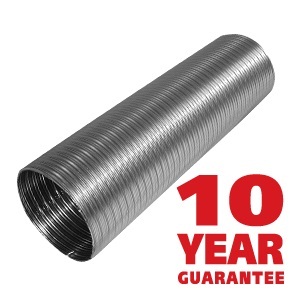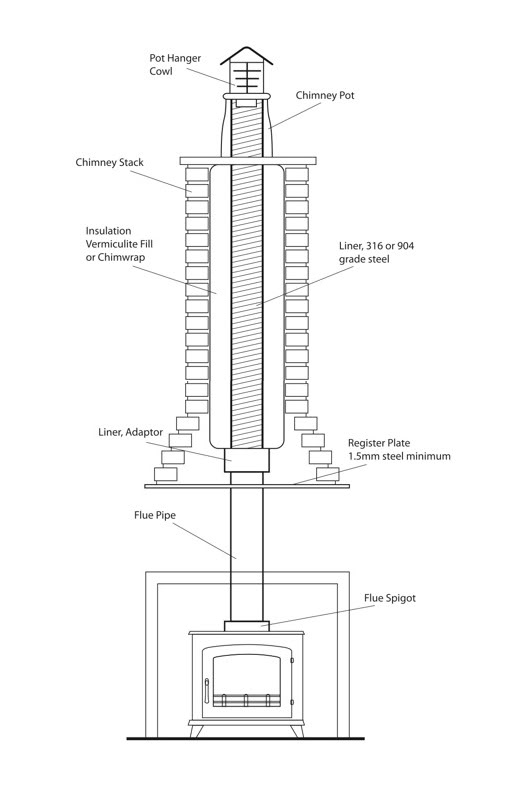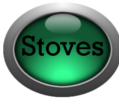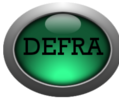Menu
Our other websites
DO I NEED TO FIT A CHIMNEY FLUE LINER?
.....back to articles index
GoogleDO I NEED TO FIT A FLUE CHIMNEY LINER? AND IF SO, WHY?
FITTING A WOOD BURNING STOVE, LOG BURNER OR MULTI FUEL STOVE.

Is it difficult? How much does it cost? Can i do it myself?
We regularly get asked this question so this article is intended to cover the main points you need to know, but as always you should consult a qualifed installer to get a definitive answer for your particular chimney/installation.
Lining a chimney with a flexible stainless steel chimney flue liner is now common practice for most reputable installers, but we still get people coming to our showroom and asking why they can't just fit a register plate, put a vitreous flue pipe through it into the chimney and seal all around it?
This is even more common from people who are replacing an open fire with a woodburner, as they reason that if the chimney was OK for that, why not for a stove?
Basically, the answer is that an open fire was sending 80% or more of it's heat straight up the chimney and in doing so it was driving the smoke and flue gases upwards - thus aiding the natural "draw" of the chimney. However, modern wood burning or multi fuel stoves are 75% or more heat efficient - meaning that only 10% or so of the heat is going up the chimney and is therefore not as efficient in driving the smoke and flue gases up and out.
Therefore, a typical stove fitted with just a flue pipe poking up through a register plate is sending flue gases into a cold chimney, where they can quickly cool and, instead of going up the chimney, they settle back on top of the register plate just above the stove.
These gases are still flammable, so any tiny spark getting into the chimney can immediately ignite the fumes and start a deadly chimney fire.
As if that isn't enough, a natural by-product of burning solid fuels is Carbon Monoxide - an odourless and colourless gas which is deadly and kills dozens of people every year. If that is sitting above the register plate and your seals are not intact, it can easily seep back into the room. This is also why it is a REQUIREMENT of the Building Regulations that you have a Carbon Monoxide Alarm installed in the same room as the stove.
Most reputable installers will not even consider doing an installation if the owner isn't lining the chimney, as they will not be willing to put the signature on the required safety certificate with the risks above already known.
So yes - it's a very good idea to line your chimney. It doesn't even cost that much - you can buy a complete liner and install kit for a medium sized chimney for under £350 and it's money that can quite possibly save your life.
Once you have decided to install a chimney liner, the next choice is - which one? Flexible stainless steel liners come in two common grades of steel - 316 and 904. Typically 316 grade comes with a 10 year manufacturers guarantee and 904 grade comes with a 20-25 year guarantee.
Most people go with 316 grade because it is roughly half the price, and because it is a thinner grade steel it is more flexible and easier to handle and fit down the chimney.
The liner is dropped down the chimney from the top and to aid this a "nose cone" is fitted to the end of the liner to stop it snagging on the sides of the chimney where the brick work is often very rough and uneven. The nose cone comes as a standard part of the liner install kits and these also include a pot hanger cowl (if you have a chimney pot) or a top plate and clamp kit with rain cap (if you don't have a chimney pot)
Typically the installers will be a 2 man team and they will attach a rope to the front of the liner and drop it down the chimney. One of the two men will pull the rope from the fireplace while the other feeds the liner into the chimney stack to stop it getting twisted or snagged. At this point, if you have not had your chimney swept prior to the install, the liner will do it for you - so remember to get it done early!
Once the liner is in place it can be cut to the required length - but please bear in mind, you cannot join any extra pieces to lengthen it. So always make sure you order a little too much rather than too little. Some people also choose to back fill the chimney space around the liner with vermiculite, in order to insulate the flue liner and prevent condensation, but this is not a requirement and is an extra expense, so is often ignored.
The completed assembly will look something like the diagram below. If you have any questions about why installing a liner is essential please give us a call

Please note these articles are inended for GENERAL GUIDANCE ONLY. We do not provide advice over the phone or by email to customers looking for a free consultancy service to help them with a DIY install, and if you have bought your stove, chimney liner or other installation kit from another supplier, we will not answer any questions or otherwise get involved in disputes or queries. Please check with your local council building controls department before commencing any work if you are unsure of the regulations.







